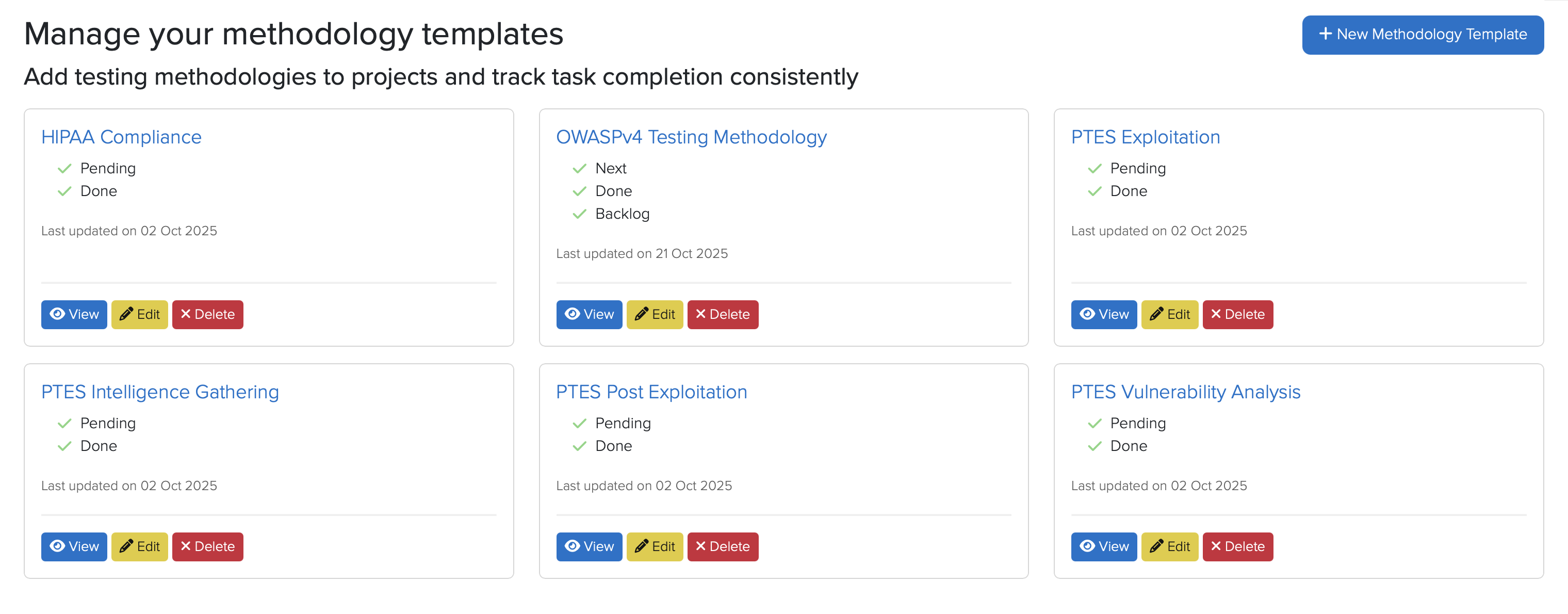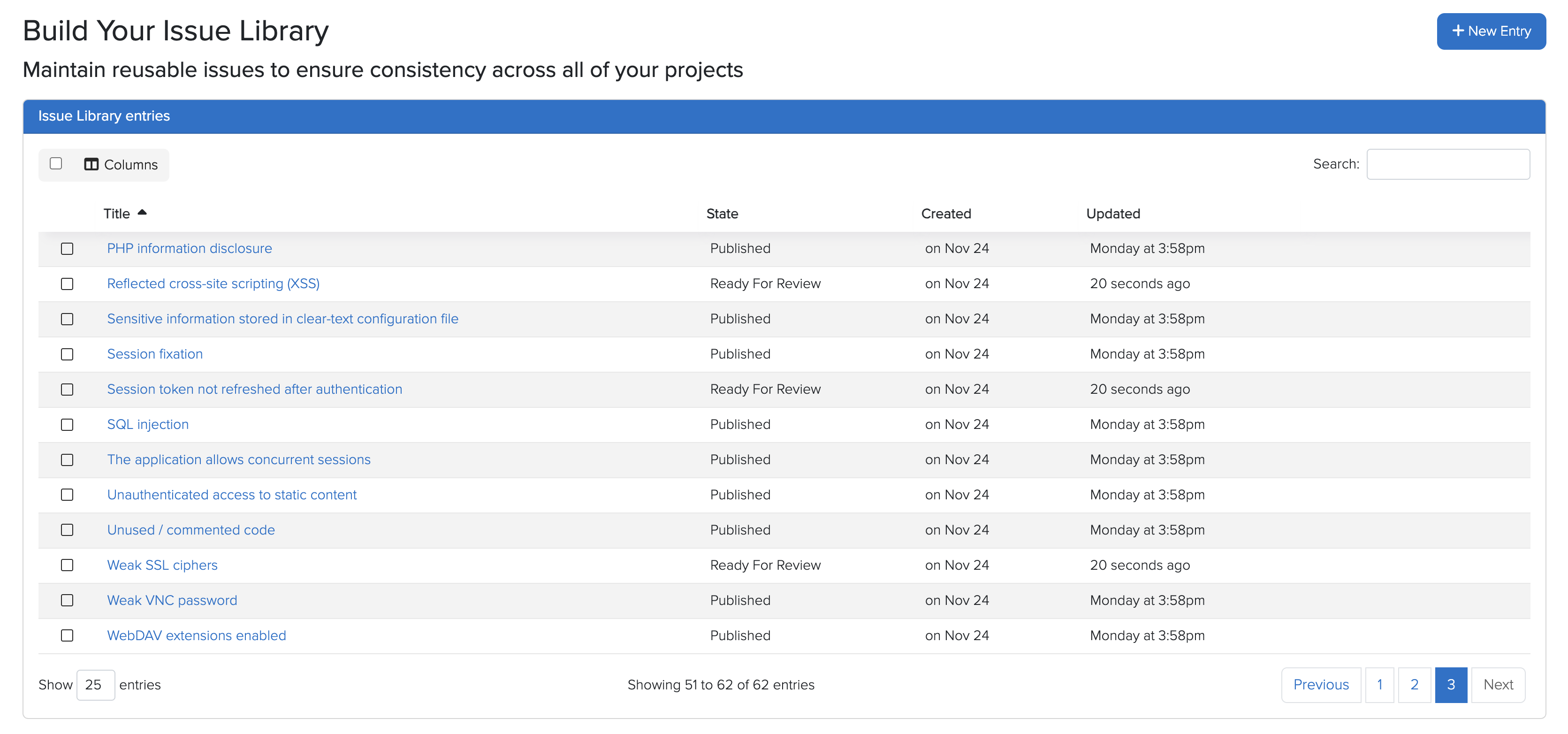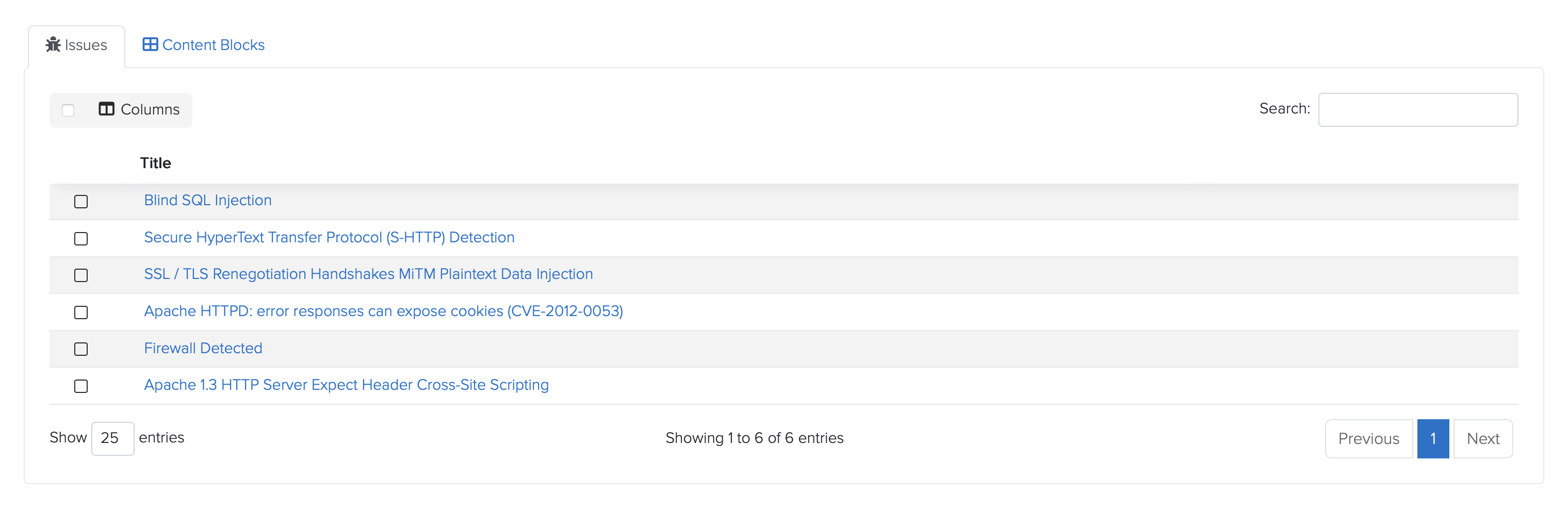Pentest reporting framework that ensures consistency across every assessment
Standardizing your pentest findings, templates, and methodologies is key to delivering reliable, high-quality security reports every time.
With a pentest reporting framework, your team can centralize issue libraries, automate formatting, and enforce structured workflows — ensuring clarity, accuracy, and consistency across all assessments.

Pull from a centralized issue library
Maintain consistency across all reports with a centralized library of vulnerability descriptions. Streamline reporting and ensure consistent output.
- Reusable vulnerability descriptions: Create and manage well-crafted, actionable write-ups for common findings.
- Automatically replace stock descriptions: Pair with the rules engine to automate consistent and accurate issue descriptions.
- Team-wide consistency: All team members work from the same centralised library inside Dradis without copying and pasting. Reducing discrepancies and maintaining a consistent reporting voice.

Enhance your quality assurance and review processes
Use built-in QA features to review items before publishing, enabling team-wide reviews within Dradis.
- Set review statuses: Assign QA states such as "Draft," "Ready for Review," or "Published" to vulnerabilities, summaries, and scopes.
- Collaborative commenting: Team members can provide feedback directly within the platform.
- Controlled publishing: Assign reviewer roles to control who can publish findings, ensuring only approved team members can finalize content.
- Quick navigation: Move directly to the next item in your QA queue after updating a state.
- See revision history: View past versions and track who made updates—including QA state changes.

Streamline reporting and simplify ticketing with the mappings manager
Simplify processing data from security tools using Dradis's Mappings Manager. Ensure consistent formatting and seamless integration.
- Customizable data mapping: Define how data from tools like Nessus, Burp Suite, and Qualys is imported, standardizing outputs to fit your reporting templates.
- Consistent report generation: Maintain uniformity by mapping tool outputs into a consistent format.
- Efficient ticketing integration: Configure mappings to align with platforms like Jira and Azure DevOps, ensuring synchronized and accurate issue tracking.








